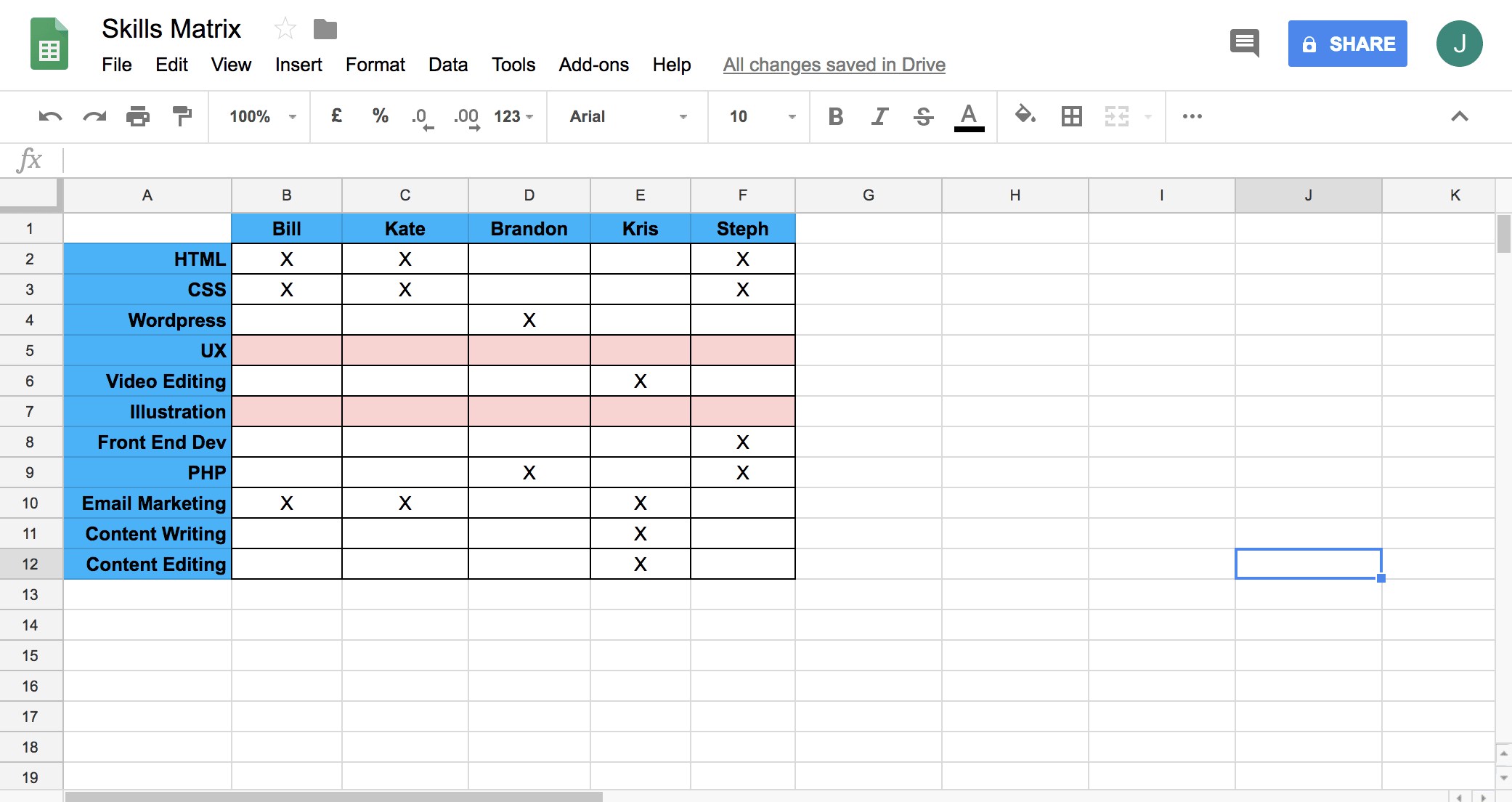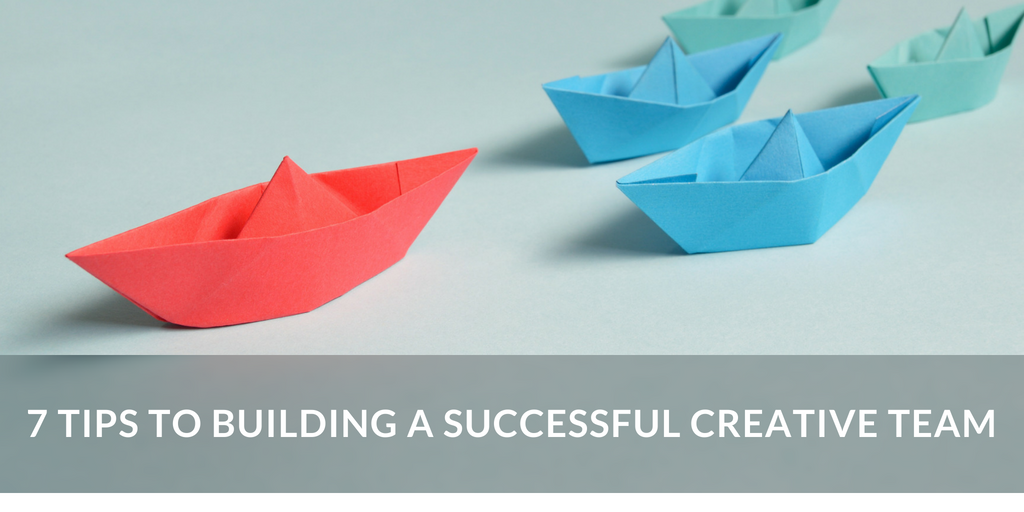“Failure is something we can avoid only by saying nothing, doing nothing, and being nothing.”
Denis Waitley
Growing a three person marketing agency into a multi-million dollar, 26 employee agency was single handedly the most difficult thing I’ve ever done.
Startup growth is a test of endurance, character, and sheer will power, and it can beat down the strongest people who try it.
In 2013, I naively dove head first into the startup life when I was hired as the third employee at a digital marketing company called Geek Powered Studios. Over the next 5 years I helped the owner grow the agency to 26 employees, landing a spot on the coveted Fast50 List, a prestigious whos-who that features the country’s fastest growing companies.
Over those years, I learned how to build companies by doing. My strategy was to learn as much as possible through business books, to try everything, to fail repeatedly, and to start all over again.
Later, by comparing my startup war stories with dozens of other entrepreneurs, I realized that every startup basically grows the exact same way. Some companies grow more quickly than others, but along the way they all follow the same predictable stages of startup growth.
The Stages of Company Growth & When to Hire
The first two stages are arguably the most fun, and they look a lot like what people imagine owning a business should look like (You’re your own boss! That must be so nice!). Stage one is a leap of faith — in this stage you’ve decided to take the plunge into business ownership and turn your vision into a one-person company. Stage one can be nerve-racking, but the excitement of entrepreneurship is usually enough to keep going.
If you make it past stage one, you’re in for a treat with stage two. This is your first expansion stage. Here, you’ll get your first office, hire a few core employees, and make the company official. This is the stage the marketing agency was in when I joined the company.
Stage two can be absolutely thrilling — the future will look bright for your company as you get a first taste of financial and professional growth. But then as you progress, the cracks will inevitably start to form. As your business continues to grow, the success that made stage two so much fun will begin to pile up and become a burden. As you grow you’ll realize the company has become too big to just wing it anymore. Now you need systems, processes, and expertise to keep the wheels from falling off.
At this point you’ve entered stage three, the most defining phase in every early-stage company. It’s here you need to decide whether the stresses of growth are “worth it”, or if you’d rather just go back to being a casual micro-company with limited structure. Author and business pro Les McKeown has aptly referred to this stage the “whitewater” stage, because it will either spin you around and send you back to where you came from, or chew you up and spit you out the other side.

At the agency I worked for, we didn’t even think twice about how to tackle the whitewater stage — we decided we wanted to keep growing no matter what, and in doing so I learned a lot about building out creative teams.
This list is comprised of seven things I wish I would have known when I set out to grow a marketing company. I hope my experiences can help you avoid some of the common mistakes I made throughout the process, and give you some ideas on how to build out your own team of creative employees.
1. Hire Slow
There’s a reason this is first on my list, and why you’ll also see it on every piece of hiring advice you’ll ever read. Hiring slow is the key to sustainable growth.
The entrepreneurial part of your brain will tell you to go with your gut, and take the first candidate you interview because you want to move on to the next important thing on the schedule. This will always backfire.
The damage a bad hire will do to your growth and your company culture is unimaginable. Take your time in vetting candidates and be thorough in your reference checks. The few hours you put in here can save you months of stress later.
For design hires, it’s extra important to vet the candidates submitted materials. It’s not uncommon for designers to exaggerate, or downright lie with their resumes and portfolios. Sometimes this is intentional, but most times in an effort to appear more experienced than they really are.
I once had a young man tell me he had designed advertising campaigns for Gatorade. When I dug in a bit deeper I learned the “advertising campaign” was actually just a made-up campaign he had imagined and created; he never actually worked with Gatorade at all. This type of deception or misrepresentation is a big red flag.
Additionally, when hiring make sure to ask lots of questions about the candidate’s design “skills”. A designer who lists “proficient at HTML” on their resume may be able to code web pages from scratch, or they may have just worked on their Dad’s WordPress website a few times. You won’t know until you ask.
2. Use Tests
I suggest you actually go one step further than due diligence in vetting new creative candidates and have each finalist for a position do a work exercise.
Depending on your state laws and your opinions of HR best practice, you can pay the candidate for their time on these projects, or you can ask them to do it unpaid as part of an interview process. I always pay candidates for these exercises because I think it’s the right way to treat creatives, a group of well-meaning people who often get taken advantage of for their talents.
For designers, you can ask them to design something based on your specific instructions to see how they follow direction and how their design aesthetic fits with what you are looking for.
With content writers you can have candidates write copy for a specific website or page, to see how well their work matches the tone of writing you’d expect.
3. Use a Skills Matrix
Developing a skills matrix is an essential exercise to ensure your creative team is versatile enough to handle any project. A skills matrix helps you to identify skill gaps that need to be filled in the next hiring wave.
Along the Y axis, list all of the skills you could ever need in a creative team: HTML, CSS, content writing, UX, video editing etc.

Then in the X axis, list all of your current employees’ names. Put an “X” in all of the categories that the employee has proficiency.
Any rows without an “X” should be required skills for your next hire. In the example above, you can see the skills matrix for a well rounded creative team, but nobody on staff has experience with UX or Illustration.
This will help reduce redundancy on in your staff and make sure you have as strong a team as possible. A skills matrix should be in the project management tool stack for every creative/marketing team and will save time when resourcing projects since it shows, at-a-glance, who can best handle a new task.
4. Experience, Not Certifications
These days there are certifications for just about any skill under the sun.
In fact, certifications are starting to cause more headaches than good, especially in the coding field. Because of an explosion in online coding bootcamps, it is conceivable for a candidate to have dozens of coding certifications, even though the candidate has never stepped foot in a working office.
Some certifications do hold substantially more weight than others in terms of tangible value to a creative team leader. However, real-world application of creative skills cannot be understated, regardless of how well certified an individual may be.
Working in the creative world is about learning by doing. Theory, languages, and trends come and go, but application of skills requires competency. Compiling a long list of certifications with impressive acronyms makes for an attractive resume, but doesn’t necessarily translate into an ability for the individual to get the work done when it’s needed the most.
5. Look at Soft Skills
In a fast-paced creative team environment, there’s a singular certainty: change.
Adapting to change and maintaining quality of work requires strong soft skills. A creative can have all of the hard skills they need to do the job, but if they aren’t flexible, aren’t coachable, don’t take direction, or have a wishy-washy sense of confidence, they will drag down even the best of teams.
When evaluating a potential team member it’s essential to see how they would react to change, accept feedback, think creatively when needed, and communicate with internal and external stakeholders when the going gets tough. Many of these soft skills are inherent and can separate a good creative from a great creative
6. Pay the right people the right amount
This can be one of the hardest things to do when you’re a cash-strapped entrepreneur living on a scrappy salary yourself.
Your first instinct will be to hire the fresh-out-of-college candidate who only costs $30,000 per year. This hire could make sense in later stages of your growth once your company has all of its structures and systems built, but in early growth you should probably leap for senior hires with experience and work maturity.
These hires will cost you more money now, but will exponentially increase your chances of success down the line. As your business continues to grow you’ll need to build a senior leadership team to help run the company, and the easiest and cheapest way is to bring on employees who already know how to lead.
Studies show Millennials hop around from employer-to-employer more than ever. While some companies have succeeded by exclusively hiring fresh employees for less and training them up, I’ve never seen it work out myself.
Nine times out of 10, I’d rather pay more money for more experienced candidates, not only because they’ll require less resources for training, but because they can bring skill sets to the table they’ve picked up at other companies.
Once you’ve made it past the oh-so-important whitewater phase of growth you’ll have plenty of opportunities to hire entry level staff. At an early stage I just wouldn’t bet my business on it in an effort to save a little money.
7. Support New Hires
It can be tempting to celebrate a new addition to your team and forget the work has just begun. When a candidate accepts your job offer, it’s important to immediately lay the groundwork to help them feel welcome, and to set them up for success.
There are a few simple steps to make a new hire’s first day more comfortable:
- Have a defined strategy in place to welcome the new hire to the team
- Get to know him or her as an individual, not just your employee
- Make sure they have all the tools needed to get the job done, but also to feel comfortable in the new environment.
When it comes to training, it’s important to have a realistic expectation of how much of your time it will take to help get the hire up to speed.
Have a set number of weeks or hours in mind it’ll take to ramp them up? Double that. Now you’re in the ballpark of the time commitment it’ll require to ensure your new teammate can do their job effectively and efficiently and become a valuable addition to your team.

